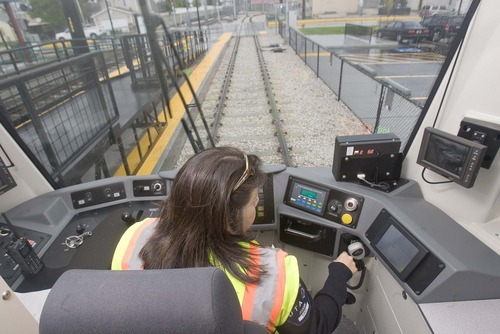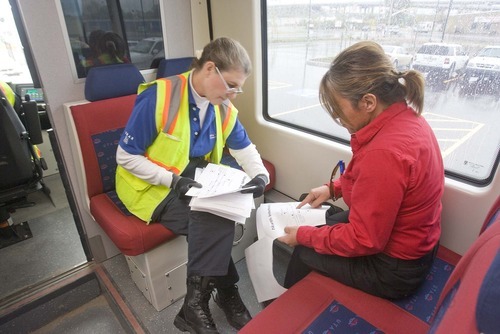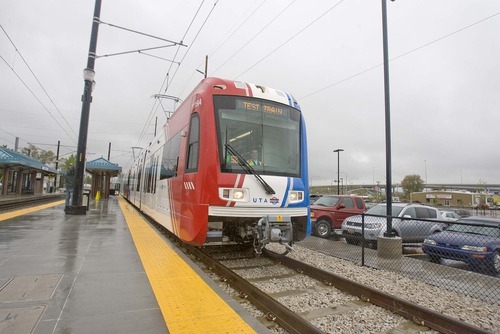This is an archived article that was published on sltrib.com in 2011, and information in the article may be outdated. It is provided only for personal research purposes and may not be reprinted.
Trains are now running — for testing only — on the new Mid-Jordan TRAX light rail line, and also will be running within a couple weeks on the new West Valley City line.
"So people need to look before crossing the tracks. There may be trains where they have not expected them before now," said UTA spokesman Gerry Carpenter. "The Mid-Jordan line was turned over to us last week for testing, and the West Valley line should be turned over within a couple of weeks."
The two new lines will not open to the public until Aug. 7. Carpenter said UTA needs the time for testing the tracks and new cars, fixing bugs it finds, figuring out when to accelerate and slow trains, and training numerous new operators as its fleet of train cars soon will more than double. UTA and fire and police agencies will also conduct emergency response drills.
UTA took the news media on one of its test runs on Tuesday, and a couple of glitches showed why it is testing the lines.
A switch malfunction caused a short delay before the train could come pick up reporters and photographers at the Fashion Place station. As the train was about to pull out toward West Jordan, it stopped when it lost contact with UTA's control room — and it had to use a backup system before proceeding.
UTA showed off features of new train cars it will use on the new lines. Entry to the cars is level with the platform, unlike cars on older lines that force riders to walk up internal stairs — or to use elevated wheelchair ramps at stations (which are not needed on the new lines).
The new trains will travel up to 65 miles an hour on parts of the new Mid-Jordan line. "The fastest they travel on the other lines is 55 mph," Carpenter said. The new trains also have improvements in propulsion, motors and air conditioning.
UTA is buying 77 new cars at $3.6 million each, and 56 have been delivered so far. That will more than double its old fleet of 69 train cars.
The new Mid-Jordan line will extend TRAX by 10.6 miles from the Fashion Place station in Murray to the Daybreak subdivision of South Jordan. When it opens, the line will run all the way to the University of Utah and incorporate the current University line.
The new West Valley City line will extend TRAX by 5.1 miles between the Valley Fair Mall and the Central Pointe station at 2100 South. When it opens, it will run to the Salt Lake Central Station downtown. Eventually, that line will extend to the Salt Lake City International Airport in 2013.
The Mid-Jordan line is projected to have a weekday ridership of 9,000 people at opening, and the West Valley City lines is expected to have 5,000.
UTA announced last week that it is eliminating 10 percent of its current bus routes in Salt Lake County, and realigning most of the rest to save money to operate the new TRAX lines. It also is rerouting many bus routes that previously ran to downtown Salt Lake City to connect to TRAX. —
TRAX facts
The Mid-Jordan extension • It will feature nine new stations and cost $535 million to build. Its construction used 4,300 tons of steel, 41,000 concrete ties, and 77,000 linear feet of overhead wire. UTA built eight bridges for it. It also has 41 at-grade crossings and 12 traction power substations.
The West Valley Cityextension • It will cost $370 million, and will add four new stations. It has used 1,950 tons of steel, 18,000 concrete ties and 63,500 linear feet of wire. UTA built five bridges for it. It will have seven at-grade crossings and six traction power substations.









